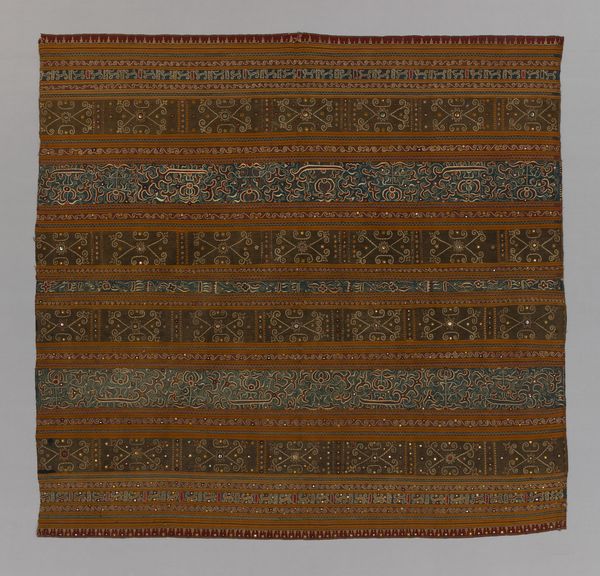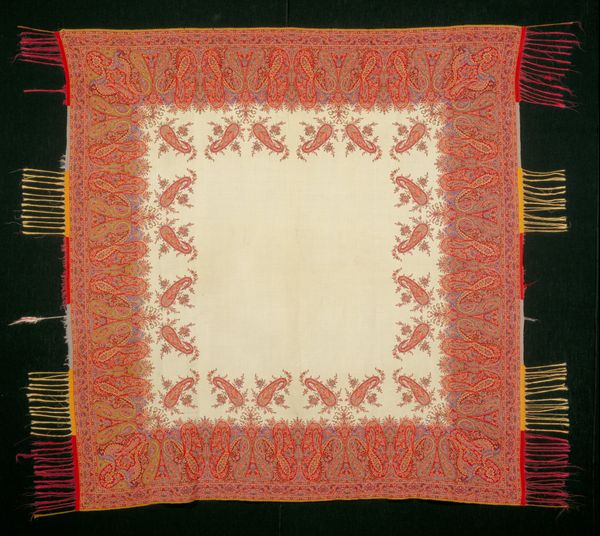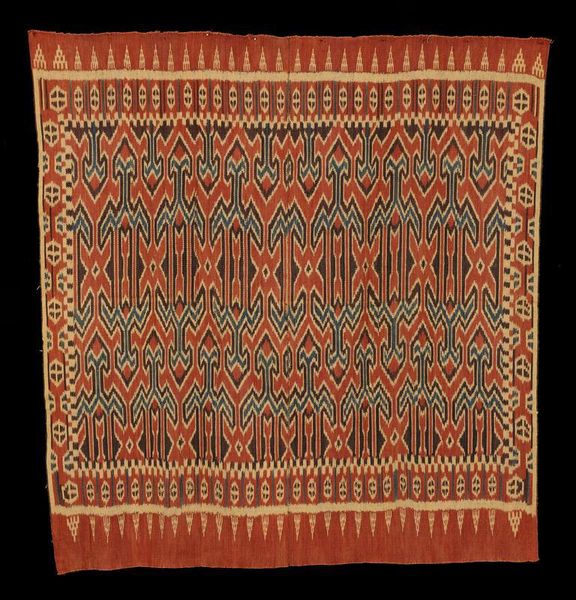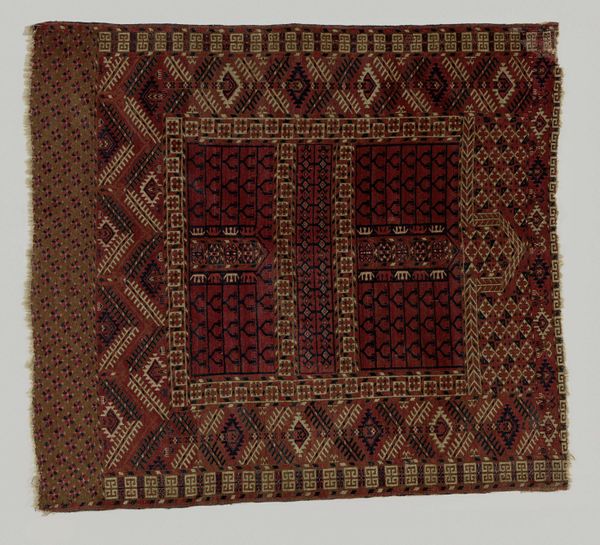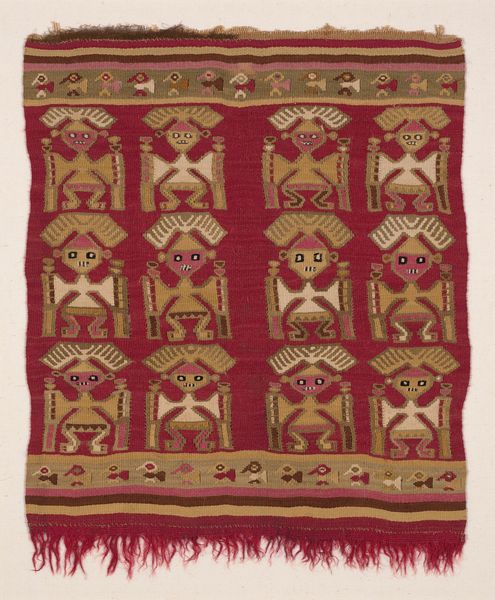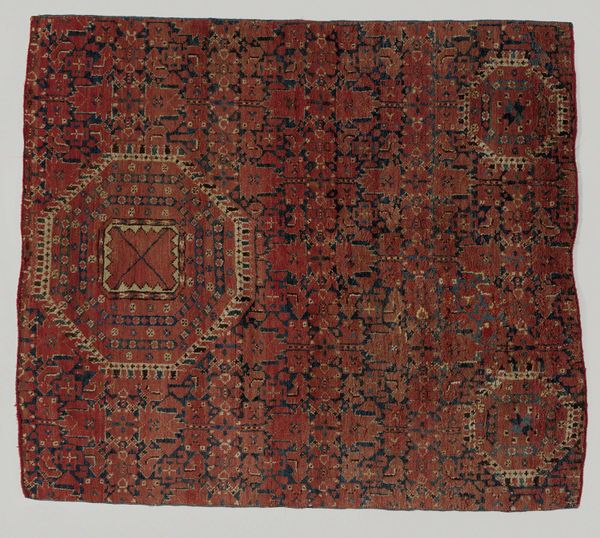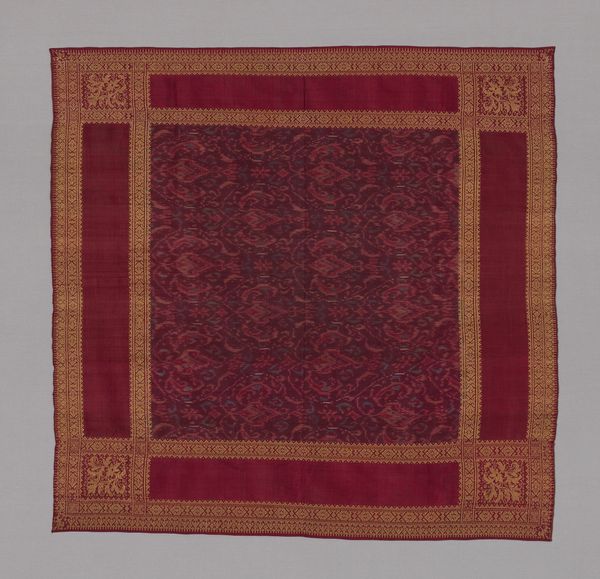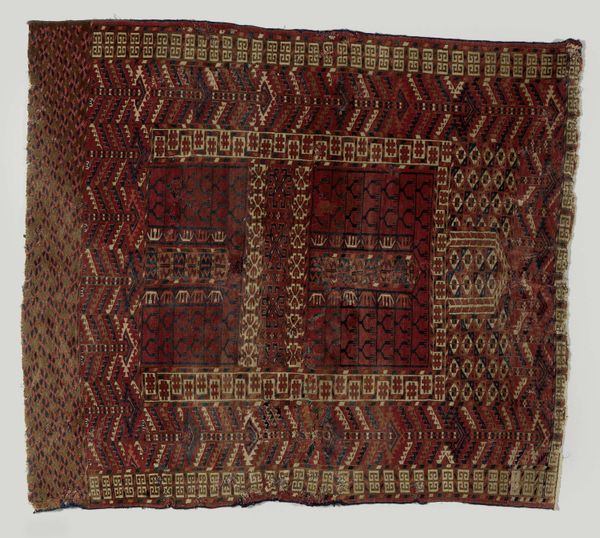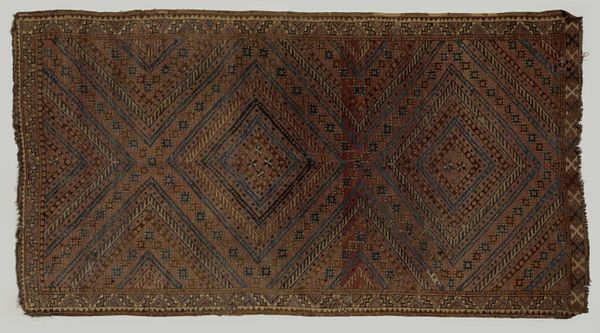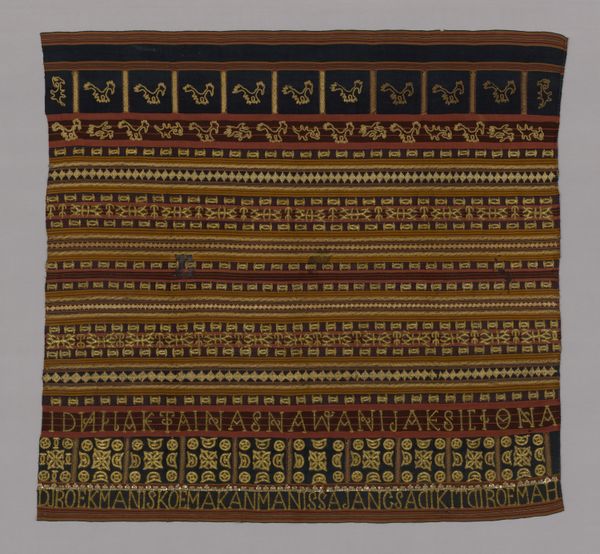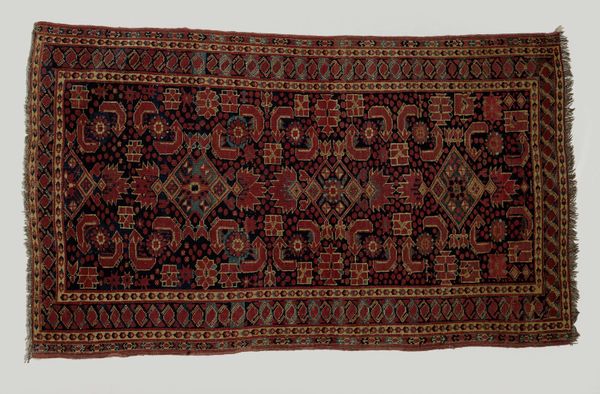
weaving, textile, paper
#
asian-art
#
weaving
#
textile
#
paper
#
geometric pattern
#
geometric
#
geometric-abstraction
Dimensions: 68.6 × 59.4 cm (27 × 23 3/8 in.)
Copyright: Public Domain
Curator: This captivating textile is a Tampan, or ceremonial cloth, from the Paminggir region, likely dating back to the 19th century. Editor: It strikes me immediately with its sophisticated geometric patterning. The careful arrangement of those interlocking shapes is quite mesmerizing. Curator: Indeed. Tampans like this were crucial within Paminggir society. They served as gifts during life-cycle rituals and ceremonies. They were deeply woven into their social fabric, symbolizing community and connection. Editor: The choice of a square format is very interesting; it immediately gives a sense of contained space, a world unto itself with its clearly defined borders. Also, the palette is very restrained and grounding—a triad of earth tones dominates, lending a solemn quality to the piece. Curator: These cloths were specifically exchanged during transitions: births, weddings, and even deaths. They facilitated the transition from one state of being to another and held significant meaning related to social obligations. We believe these cloths also regulated social interactions during community feasts, indicating a shared visual language of meaning and decorum. Editor: You mention this textile embodies meaning through transitions, and I see visual support for that argument. Look at how each chromatic block is separated from the other by intricate geometric borders that echo throughout the work. The borders work like frames containing visual movement but never stopping the eye completely, guiding the observer into another frame of the design. It feels active, rather than stagnant. Curator: It's precisely that active quality which played a role in maintaining and signifying social bonds. These designs, while abstract to our eyes, contained powerful iconographic meaning understood within the community. The Art Institute of Chicago holds this object in their collection as a fine specimen of south east Asian woven material traditions, adding to its modern-day value. Editor: And considered purely from a formal perspective, this textile manages to reconcile this idea of containing motion; the interplay between the individual unit of geometric figures to the overall design creates a fascinating dynamic to the otherwise straightforward composition. Curator: It makes you wonder what those particular symbols meant to those exchanging the cloths centuries ago. Perhaps, in contemplating the unknown, we gain our own symbolic interpretation as viewers today. Editor: Precisely, a beautiful convergence of intention and form. I leave with a richer perspective than I began with.
Comments
No comments
Be the first to comment and join the conversation on the ultimate creative platform.
